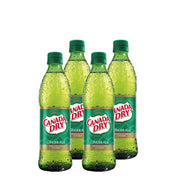Hard seltzers and ready-to-drinks are very popular drinks found in supermarkets, liquor stores, and convenience stores. They stand out for their canned presentation with striking colors and disruptive Anglo-Saxon names. These drinks have captivated consumers due to their wide variety of flavors, smells, and alcohol levels. They range from soda-like options with a hint of alcohol and flavor, to drinks with an alcohol content of up to 20 degrees that can get you drunk with just one can.
The main consumers of these drinks are young people between 18 and 34 years old, especially millennials, who choose these drinks mainly for their low calorie content at very low cost.
Bubbly drinks with a touch of alcohol and their suitability for celiacs are also valued. More than 100 million cases of these drinks are sold every year, and the pandemic has driven their introduction in Latin America, including countries where they did not previously exist. Currently, they are produced locally in Mexico, Colombia, Chile, Brazil and recently in Argentina.
What are the big differences between hard seltzers and ready-to-drinks?
A hard seltzer is a low-calorie, carbonated beverage that combines sparkling water, distilled alcohol, flavorings, and often a touch of sweetener. They generally have a lower alcohol content compared to other alcoholic beverages such as beer or liqueurs, and are noted for having a light and refreshing taste. Hard seltzers have gained popularity as a low-calorie, gluten-free alternative to traditional alcoholic beverages. A basic example of a hard seltzer is Corona Tropical.
On the other hand, ready-to-drinks (RTD) are pre-mixed and ready-to-consume alcoholic beverages. These drinks are usually sold in cans or bottles and contain a combination of distilled alcohol, mixers, and flavors. RTDs are convenient because they require no additional preparation and can be consumed directly from the can or bottle. Some common examples of RTD include cocktails such as margaritas, pina coladas, mojitos, and pre-mixed whiskey colas. Examples: Caldas Old Rum Cocktails and Four Loko.
The main difference between a hard seltzer and an RTD lies in the composition and purpose of the drinks. While hard seltzers are carbonated, low-calorie drinks, RTDs are premixed mixtures of alcohol and other ingredients that are consumed as they are, with hints of higher alcohol accompanied by mixtures such as fruits or exotic flavors. Hard seltzers typically have a lighter (simpler) flavor and focus on offering a low-calorie option, while RTDs can have a wider range of flavors and offer a complete cocktail experience in a single drink with a twist. strength from alcohol.
Liquor cans are preferred by young people.
The preference for drinks such as hard seltzers and ready-to-drinks instead of liqueurs may be due to several factors:
- Light and refreshing flavor.
- Low calories and healthier options.
- Convenience of being ready-to-consume drinks.
- Attractive presentation and marketing strategies.
- Changes in consumer trends and culture.
- Price and availability of cold product.
However, individual tastes may vary and some people still prefer traditional liqueurs for their stronger flavor or for other personal reasons.








